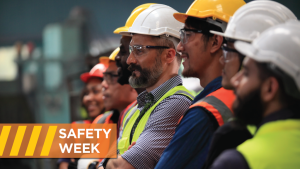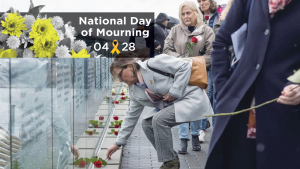The real number of work-related fatalities in Canada is much higher than official statistics indicate.
That’s the word from Steven Bittle, associate professor of criminology at the University of Ottawa’s faculty of social sciences, who produced a study on work-related fatalities which “conservatively estimates” the number to be 10-13 times higher than those reported to the Association of Workers’ Compensation Boards of Canada (AWCBC).
The AWCBC’s numbers — typically calculated to be about 1,000 deaths per year — are based on work-related deaths accepted for compensation. The University of Ottawa professor’s statistics take a larger view.
The biggest gap between reported and not-reported work-related fatalities is occupational disease, which includes occupational cancers and suicides, he told a luncheon audience at the 2019 Health and Safety Conference recently in downtown Toronto.
While most fatalities on worksites are reported, official statistics don’t account for other deaths, such as those from long-term exposure to toxic chemicals, he said.
Bittle, who was keynote speaker at the luncheon, said cancer deaths with a work-related element could range from 6,000 to 12,000 annually in Canada, based on various research studies and formulas developed for estimates in other countries.
He said there is “a significant body of research” that links chronic obstructive pulmonary disease (COPD) to work environments. Through Statistics Canada data and existing research, Bittle’s study determined that at least 2,000 COPD fatalities have a work-related component.
There is a severe lack of reliable data and sources to get a better account of it,
— Steven Bittle
University of Ottawa
The conference was presented by Lancaster House in association with the University of Toronto, the Centre of Industrial Relations and Human Resources and the Institute for Work & Health.
Bittle’s study, prepared with the assistance of two of his graduate students working on a voluntary basis, is based on previous academic studies, official government and non-governmental sources.
He did the study because he felt there wasn’t enough being done to stem the numbers of work-related fatalities.
“This is about achieving justice for people not counted in the official statistics. There is a severe lack of reliable data and sources to get a better account of it.”
Bittle said commuting deaths should be considered in the formula for work-related fatalities. He pointed to a bus/train collision where the family of the bus driver killed was compensated but the families of commuters on the bus who died saw no compensation.
Bittle said it is an age of “presenteeism” where employees are expected to show up to work whether they are sick or not.
“People in our country go to work regardless of the weather conditions,” he added, “and that means many people are just trying to get to and from work in dangerous conditions.”
Bittle’s research showed there are probably about 460 commuter fatalities annually. The research was based on data collected from commuting patterns sourced through Statistics Canada and from Transport Canada’s stats on fatalities broken down by the hour of the day. Those statistics don’t take into account non-standard commuting hours.
Should statistics include non-working fatalities resulting from work-related mishaps? Bittle said the Lac-Megantic, Que., rail disaster in 2013 saw many non-working fatalities.
That working environment was “less than ideal and in many ways dangerous and illegal,” he told the conference audience.
Bittle said he plans to do research into work-related suicide “because we think it is under-researched in Canada.”
He calculates that at least 10 per cent of suicides have a work-related component or the potential to be work-related. That translates to 400 work-related suicides in Canada annually.
“It’s an area that needs more research.”
Academia and policymakers turned their attention to suicide in the late 2000s in France when there was a spate of suicides linked to the country’s privatization, he said.
Bittle, whose research mainly concerns corporate crime and criminal liability, said “a troubling reality” is that corporations “take massive risks with workers’ lives on route to maximizing profits.”
His study came up with several reasons that governments don’t have more accurate work-related fatality counts. One is that a capitalist state has contradictory roles: one to be responsible for protecting citizens, the other to advance interests of private enterprise.
Another reason for the fatality shortfall count is that there is a long history of blaming workers for their own victimization, he said, adding that workers are expected to do more for less and not complain.
“In this age of austerity, regulations are seen as a four-letter word,” Bittle said.











Recent Comments
comments for this post are closed